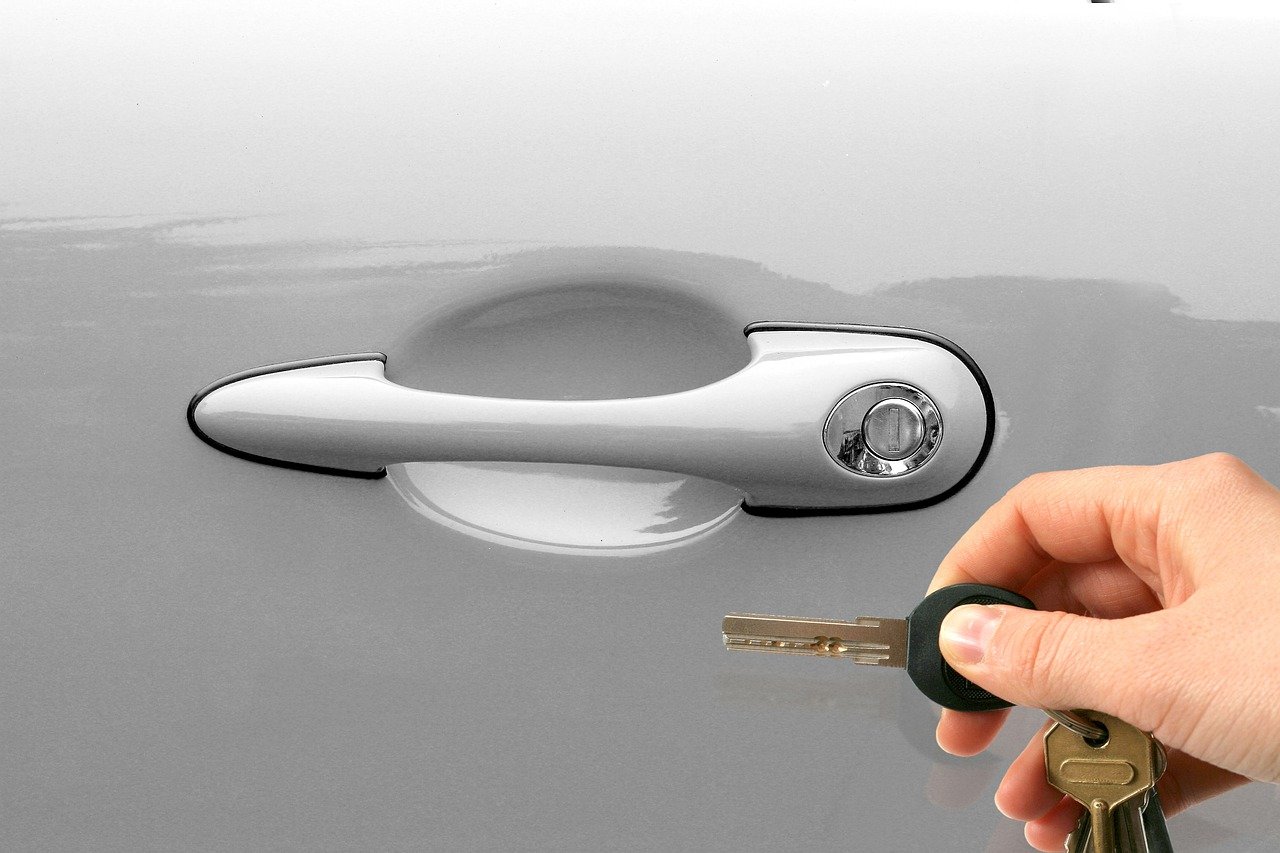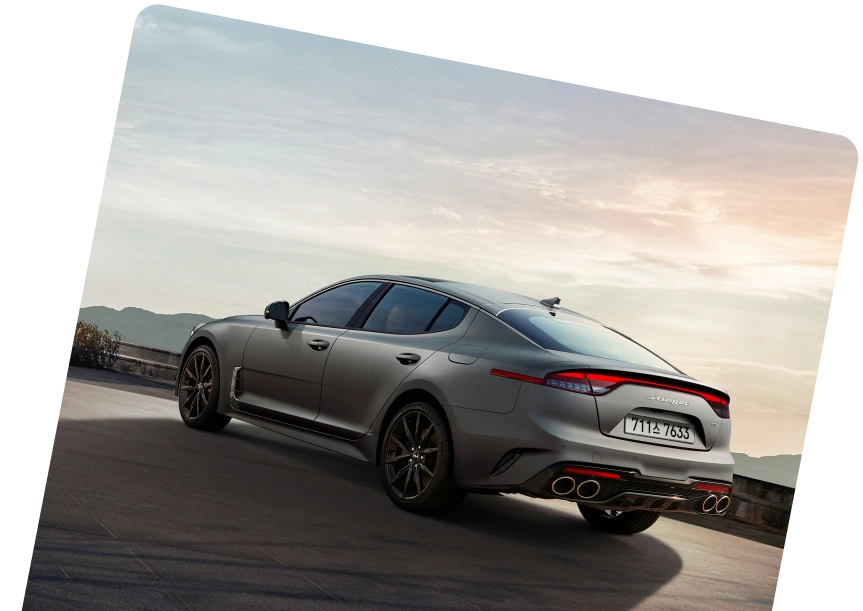
The best way to get a car depends on how you pay. Leasing or PCP both let you drive a new car without the full upfront cost, each with clear pros and cons.
Leasing a car is hire: you make an initial payment, fix a lease term, and at the end of your contract you simply hand the car back, often moving to a lease car every few years.
PCP means lower instalments with a final payment to own the car. This car finance that allows ownership gives you options at the end: buy, part-exchange your old car, or hand back.
So, whereas PCP offers ownership and flexibility, leasing gives fixed costs and a clean return. Both PCP contracts and leases depend on the length of the contract: keep the car, or swap to a car every few years. But which one actually makes sense for you? Let’s dive into both options to help you make a confident choice.
What is Leasing?
Leasing, also called Personal Contract Hire (PCH), is a form of long-term rental. Leasing allows you to drive a new vehicle without owning it. You never take the title of the car, and at the end of your agreement you return it.
At the start, you pay an initial rental, then fixed lease payments each month. These payments allow you to pay for the car’s use, not its full value. The term usually runs two to four years, and in many cases it can be cheaper to lease than to finance the same model.
When you hand the car back to the leasing company, it must meet mileage limits and the fair wear and tear standards. You cannot purchase the car outright at the end. If you want ownership, you’ll need another product such as pcp car finance, an hp agreement, or a personal loan might be an option.
The main benefits of leasing include predictable costs, access to the cost of a new or brand-new car, and no risk from depreciation. Deals are often arranged through a leasing broker, who sources offers from multiple providers.
There are limits too. Leasing works best if you don’t want to purchase and prefer a simple way to budget. You build no equity, and you cannot use an older car or part exchange at the end.
Find car finance deals with the best rates!
My monthly budget is
What is PCP?
A Personal Contract Purchase, or PCP, is a form of car finance that lets you drive a car without paying the full price upfront. A pcp agreement gives you monthly payments that tend to be lower than hire purchase because you only cover part of the car’s value, not the whole amount.
At the beginning of your contract, you pay a deposit and then make fixed monthly payments. These payments are based on depreciation, not the full cost of the car. The finance company sets a Guaranteed Minimum Future Value (GMFV), also called the balloon payment at the end.
With PCP, you never pay the total amount of the car’s full price unless you choose to purchase the vehicle at the end. You only cover the drop in value plus interest. If you decide not to purchase the car, you can hand your car back without further obligation.
Leasing vs PCP: Comparing the differences
So what are the differences between the two car buying schemes? We have prepared a table with a simple and clear explanation of the advantages and disadvantages of both approaches.
| Personal contract purchase | Lease | |
|---|---|---|
| Deposit required | Yes | Yes |
| Fixed monthly payments | Yes | Yes |
| Interest charged on repayments | Yes | No |
| Mileage allowance | Yes | Yes |
| Maintenance package | Yes | Yes |
| Depreciation risks | No | No |
| Charges for excess wear and tear | Yes | Yes |
| Balloon payment | Yes | No |
| Secured against an asset | Yes | Yes |
| Own the car outright the term | No | No |
| Early pay off charges | Yes | Yes |
| Available Cars | Any | Any |
| Mileage | Limited | Limited |
| Secured Against an Asset | Secured | Secured |
1. Available cars
PCP gives you the widest choice. You can pick from new and used cars, including an older car if it meets the lender’s age and mileage rules. You can order a factory-build, choose colour, and add options. Dealers across the UK support PCP, so niche trims and less common models are easier to source.
Leasing focuses on brand-new supply. Funders and your leasing broker prioritise in-stock cars and fixed trims. Lease deal windows come and go, and lead times apply on factory orders. You may see nearly-new or ex-demo offers, but used leasing remains limited compared with PCP.
Choose PCP if you want maximum model range, used stock, or full customisation. Choose leasing if you want a sharp price on a new model and you’re happy with preset specs.
2. Monthly payments and deposit
PCP and leasing set up your monthly payments in different ways. With PCP car finance, you pay a deposit at the beginning of your contract which reduces the balance you finance. Your monthly cost then covers the car’s price minus that deposit and the expected future value of the vehicle, plus interest. That future value links directly to the balloon payment at the end. You make this payment at the end if you want to purchase, but you also have the option to return the car or part-exchange it instead.
Leasing works differently. You pay an initial rental, not a deposit, so you build no equity. Fixed lease payments simply allow you to pay for use, not ownership. Many offers show “6+35” or “3+23”. The first number is the initial rental expressed in months, and the second is the number of rentals that follow. In many cases it can be cheaper to lease than to finance the same model, because leasing allows funders to set sharp deals on selected trims.
In both products, your monthly price depends on the value of the vehicle, mileage limits, contract length, and chosen specification. More mileage or higher trim raises the cost, while longer terms can lower each instalment but increase the overall amount.
The difference is simple. PCP gives you lower monthly costs with a path to ownership through the final balloon payment, while leasing ties you to fixed rentals with a clean return at the end.
3. Do I own the car?
PCP can lead to ownership; leasing cannot.
With PCP, the finance company holds legal title during the term. The agreement is secured against an asset — the car. You pay monthly, then settle the balloon (GMFV) and any option to purchase fee at the end. You gain title after that final payment. You may appear as the registered keeper, but the lender owns the car until you complete the payments.
With leasing (PCH), you never gain ownership. The funder owns the car throughout. You may be the registered keeper for practical reasons, but title stays with the leasing company. At the end of your agreement, you return the car in line with mileage limits and fair wear and tear rules.
Choose PCP if you want a route to own; choose leasing if you want use and a clean hand-back.
4. End-of-term options
PCP gives you three clear choices; PCH is return-only. With PCP, the finance sets a
Guaranteed Minimum Future Value at the start. At the end of PCP you can buy the car by paying the optional final (balloon) payment plus any option to purchase fee; return the car; or part-exchange it if the market value sits above the GMFV.
With leasing (PCH), you hand the car back when the term ends; no option to buy forms part of the deal.
Both routes check condition and mileage at hand-back. You must meet the agreed mileage and BVRLA fair wear and tear standards or pay charges.
Choose PCP if you want a path to ownership or equity for your next deal. Choose PCH if you want a clean return with fixed rentals and no resale risk.
5. Mileage limits & charges
Both products cap your miles and charge for excess. They handle the charge differently at the end.
With PCP, you set an annual mileage when you sign. If you hand the car back, you pay an excess mileage charge for miles above the limit. If you buy at the end, no mileage fee applies. High mileage still hurts you. It lowers the expected future value and can reduce your equity. You might leave with less to put towards your next car.
With Leasing (PCH), you also set an annual mileage. The funder checks your odometer at return and applies a per-mile charge for any excess. The rate sits in your agreement. You always face this check because leasing ends with a return, not ownership.
Mileage changes price. A higher allowance raises your monthly but protects you from steep per-mile charges at hand-back. A low allowance trims the monthly yet risks a large bill later. Longer terms multiply total miles, so plan with care.
6. Budgeting & affordability checks
PCP usually needs a 10% deposit – £2,500 on a £25,000 car. Payments cover the price minus the GMFV (around £9,000–£11,000 after 3 years) plus interest. APR ranges from 7.9%–12.9%, giving monthly costs of £250–£400 on a mid-range car. At the end you can hand the car back, part-exchange, or pay the balloon (about £9,500). To leave early, request a settlement figure, valid for a few weeks.
A Lease (PCH) uses an initial rental (e.g. 6 months upfront), not a deposit. Rentals in 2025 sit at £250–£350 for hatchbacks, £350–£500 for SUVs, £500–£700 for premium EVs. No APR applies — you compare rentals, initial rental, and extras. Early exit brings heavy fees.
7. Flexibility
PCP gives you more choice; leasing keeps things simple but strict. With PCP, you choose at the end: buy via the balloon, hand the car back, or part-exchange into your next deal. You also hold a statutory Voluntary Termination right under the Consumer Credit Act once you meet the 50% threshold, which includes the balloon; this can cap your exit cost. You can clear finance early by asking for a settlement figure and then selling or part-exchanging the car.
With leasing (PCH), you return the car at the end; there is no option to buy. Providers can charge a sizable termination fee if you exit early. Some funders let you amend mileage mid-term, which can change the rental, but approval sits at their discretion. You must return the car within BVRLA fair wear and tear standards to avoid damage charges.
8. Early termination
PCP gives you a legal exit; PCH does not. Under the Consumer Credit Act, you can voluntarily terminate a regulated PCP at any time. You must have paid, or pay up to, 50% of the Total Amount Payable, which includes the balloon on PCP. You must also take reasonable care of the car. After that, you hand it back and owe no more under the credit (apart from arrears and permitted charges).
You can also settle a PCP in full before the end. Ask for a settlement figure and clear the balance; the lender must provide a rebate of future interest as set out in the Act.
Leasing (PCH) works differently. There is no statutory VT. Early termination depends on your contract and can be costly. Some funders charge around 50% of the outstanding rentals or calculate a bespoke fee; some may not allow termination at all. You cannot rely on a right to cancel without charges.
Pick PCP if you want a legal safety valve and a clear settlement route. Pick PCH if you accept a contract-only exit and plan to complete the term.
9. Road tax & maintenance
PCH includes road tax for the full term; PCP does not beyond year one. In leasing, the finance company is usually the registered keeper and builds VED into your monthly rentals. With PCP, the first-year VED sits in the on-the-road price; from the second year you renew and pay it as the keeper.
Servicing and tyres are not included by default. Leasing lets you add a maintenance package for a fixed monthly fee that covers routine servicing and consumables (often tyres). PCP may offer separate service plans from the dealer or manufacturer, but the finance itself does not include maintenance.
10. Depreciation risks
PCP splits the risk; leasing shifts it to the funder. With PCP, your monthly payments cover the expected depreciation down to the Guaranteed Minimum Future Value (GMFV) set at the start. That figure forecasts what the car should be worth at term end and anchors your payments.
At the end, your choice decides who carries resale risk. Return the car and the finance company takes the market risk against the GMFV. Buy the car and you take future value risk from that point. Part-exchange sits between: if the car is worth more than the GMFV, you keep the equity; if it’s worth less, you lose that buffer. If you leave early, you request a settlement figure from the lender; this is calculated from what you owe under the agreement, not the car’s current market value.
Leasing (PCH) prices depreciation into fixed rentals and always ends with a return. You hand the car back; the funder then handles resale and carries residual value risk. You still face checks for mileage and fair wear and tear at return, and charges can apply for excess or damage.
Choose PCP if you want the option to own and manage value risk on your terms. Choose leasing if you prefer a return-only path where the funder holds resale risk, and you focus on usage and condition.
11. Secured against an asset
PCP is secured on the car; leasing is not secured credit. With PCP, the finance company holds legal title during the term and uses the vehicle as security. If you miss payments, the lender can take the car back under the agreement. You gain title only after making all payments, including any optional final payment.
Leasing (PCH) is a consumer hire agreement. You rent the car; the leasing company remains the owner throughout. You do not grant security over your home or other assets. At the end of the term, you hand the vehicle back as agreed.
Choose PCP if you want a credit route secured on the car with a path to ownership. Choose PCH if you want a simple hire with a return at the end and no secured credit.
Similarities between leasing and PCP
Both products feel similar day to day. You make fixed monthly payments, follow a mileage allowance, and face checks at the end. PCH always returns the car; PCP lets you return as one of the end options.
You pass a credit check for both. You arrange comprehensive insurance and cover running costs such as fuel, servicing, and tyres.
You must keep to your mileage allowance or pay an excess mileage charge. On return, the car must meet BVRLA fair wear and tear standards or you risk damage charges.
If you want to change car mid-term, expect a settlement figure on PCP or a termination fee on PCH. Neither lets you “switch” without cost.
Is leasing (Personal Contract Hire) or Personal Contract Purchase (PCP) finance better?
Pick PCP if you plan to own. PCP offers a future purchase route via the final payment, plus the choice to return or part-exchange instead. It also works for used cars and factory orders, so you can match spec and colour. You can use any equity at the end towards your next deal.
Pick leasing if you want simple use and a clean hand-back. PCH is rental: you pay fixed rentals for a set term and return the car at the end. No purchase option applies, so you avoid resale risk and move into a fresh agreement if you like.
Check the practicals before you decide. Both products set a mileage allowance and assess fair wear and tear at return; excess miles or damage bring charges. You also pass a credit check and arrange comprehensive insurance.
That’s the rule of thumb: want ownership and choice? Pick PCP. want predictability and hand-back? Pick leasing.








